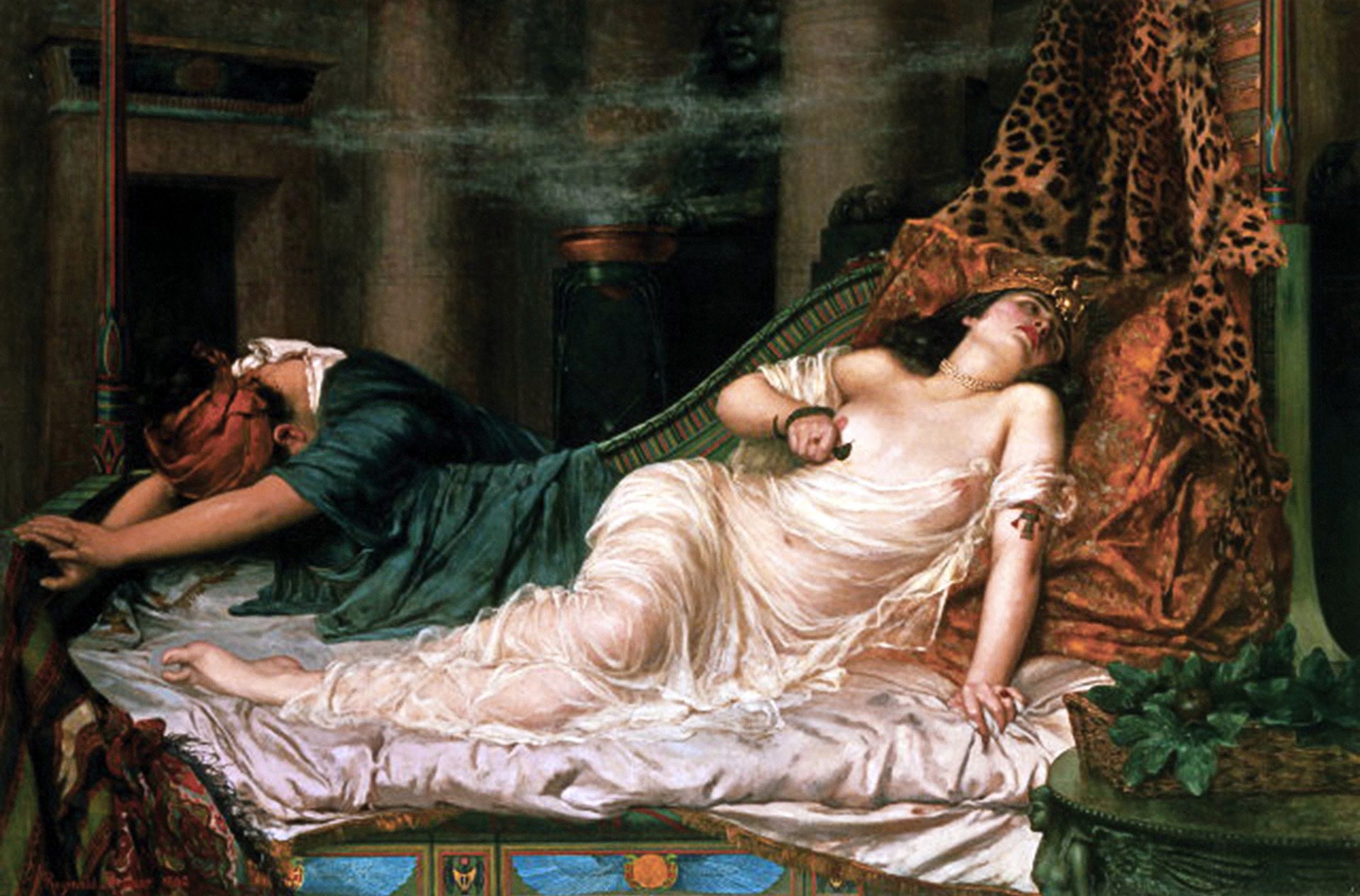Dear Classical Wisdom Members,
I don’t know if all kids are like this… but mine is somewhat obsessed with the continued legacy of historical figures.
The questions usually begin with: And did they have any children? Boys? Girls? And what about those kids? Did they have kids? And are any of them alive today?
She’s always disappointed to discover that they aren’t still alive, somehow.
I’m not sure why this fascination occurs… perhaps it’s a way for a child to connect to these sometimes larger than life characters from the past. Probably they can relate to the (sometimes hypothetical) youth in the situation more than the warrior, king, philosopher or queen.
This is particularly true, in fact, for Cleopatra.
Indeed, when I told dear daughter we would be running a piece delving into Cleopatra’s daughter, my own little girl was absolutely thrilled.
I was too, truth be told, as I also wondered… what happened to those children? The products of Cleopatra and Mark Antony and Julius Caesar?
While most of them had tragic ends, Cleopatra’s daughter Selene was an absolutely fascinating woman in her own right. She has certainly been overshadowed in the history books by her glamorous mother, but today we will give this queen in the making some of the attention she truly deserves… a look at a dynasty’s last breath.
Read on to discover: What happened to Cleopatra’s daughter?
All the best,
Anya Leonard
Founder and Director
Classical Wisdom
P.S. Fun fact for those of you who think like Frida… turns out that there are living descendants of Mark Antony… they are the kings of Georgia! Yes, the current Crown Prince, Nugzar Bagration-Gruzinsky, and other members of the Bagrationi Royal House are living descendants of Mark Antony. Now, isn’t that cool?
Cleopatra Selene: A Dynasty’s Last Breath
By Mary Naples
The streets of Rome were drunk and riotous with delight in the summer of 29 BCE on the final, most opulent day of Octavian’s three-day-long triumph celebrating his victory over Egypt’s Cleopatra. Always up for a party, hundreds of thousands of spectators—--some of whom had been standing for days, others for hours—were packed side by side as they lined the city walls to catch a glimpse of the three-mile-long procession winding its way through the capitol. As the clamorous procession rolled by Rome’s mud and brick buildings, the cobblestone streets were awash with the shimmering splendor of gold, silver, and ivory—-swaggering plunder from Egypt’s enormous reserves.
Spurred on by each other and goaded by the wine, the main exhibit the crowd was craning their necks to see was coming up at the rear. Since Cleopatra’s suicide denied Rome the supreme satisfaction of seeing her in shackles, Octavian was reduced to parading around her likeness instead. Fully costumed in effigy, the queen the Romans loved to hate was in a death throes abreast her soon-to-be trademark asp. But a hush fell upon the jeering crowd when their focus was drawn to the two children manacled in chains of gold standing beside her.
So that there was no question over whose children they were, Octavian made Alexander Helios (Sun) and Cleopatra Selene (Moon) dress as the sun and the moon. Though the two ten-year-old fraternal twins of Cleopatra and Marc Antony were no strangers to public display, their fall from grace is hard to imagine. A few years preceding in the largest structure of Alexandria—the expansive six-hundred-foot-long gymnasium—- the children, along with their parents and two brothers, were hailed as potentates and worshiped as gods.
That was when their parents summoned all of Alexandria to the marble-colonaded gymnasium for a lavish extravaganza known as the Donations of Alexandria. In the grand finale of the pageant, Antony and Cleopatra were seated on gigantic golden thrones and costumed as Dionysus/Osiris and Aphrodite/Isis. Cleopatra’s son by Julius Caesar—Ptolemy XV Caesar “Caesarion” —- was dressed as their son Horus. The twins, at six years of age, made their first public appearance similarly attired in elaborate costumes. More show than substance, the donations were a series of territorial “gifts'' from Antony to Cleopatra. The territories, however, were either already within her domain or were under Roman control and fancifully within her reach.
In the ceremony, Antony confirmed Cleopatra as queen of Egypt, Cyprus, Libya, and central Syria while Caesarion—at thirteen years of age—-was proclaimed son of the deified Julius Caesar (thus son of god) and hailed as the king of kings and heir to his mother’s domain. The three children of Antony and Cleopatra were each given a portion of other lands. A diminutive Cleopatra Selene became queen of Crete and Cyrenaica (eastern Libya) and Alexander Helios became king of Armenia, Media, and Parthia. At a mere two years of age, her youngest brother, Ptolemy Philadelphus, was named king and awarded Syria, Phoenicia, and Cilicia. The donations were one of the factors that would ultimately lead to a rupture in the precarious relationship between Antony and Octavian, resulting in the final war of the Roman Republic. In three short years, it would spell defeat for Antony and Cleopatra.
But before Alexandria fell to Octavian, Cleopatra relocated the three youngest
Keep reading with a 7-day free trial
Subscribe to Classical Wisdom to keep reading this post and get 7 days of free access to the full post archives.





